A Guide to the Public Art of Klamath County
Creative types have been drawn to Klamath County for generations—inspired by its history, curious about its surroundings, and excited to create community in a variety of inventive ways. Over the years, these artists have cultivated a vibrant public art scene across Klamath County that defies easy description and includes a wide swath of works: historic murals, colorful utility boxes, and even free-to-play pianos in public plazas.
Fortunately, it’s easy to experience that on your next visit to the region. We’ve put together a guide to the public art of Klamath County, from the region’s colorful murals to captivating bronze sculptures and (of course) those dazzling pianos. Here’s where to get started.
Historic Murals in Downtown Klamath Falls
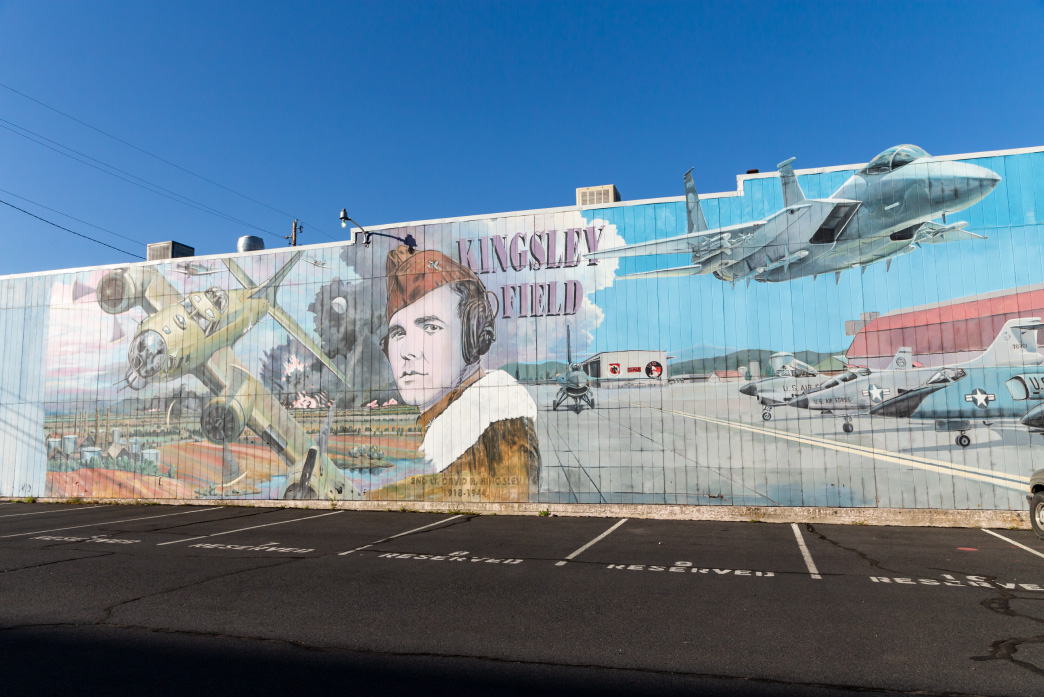
The Kingsley Field mural in downtown Klamath Falls pays homage to aviation heritage. Discover Klamath
Klamath County has a long and storied history—as a longtime home to numerous Native American tribes, as a stalwart logging community, and as home to Oregon’s only national park. Get a feel for it all with a walking tour that passes a half-dozen murals in downtown Klamath Falls.
The murals all sit within a few blocks of each other and cover thousands of years of regional history: local tribes fishing on Lake Ewauna (the headwaters of the Klamath River), the importance of trains to connecting Klamath County with the wider world, the legacy of Kingsley Field, and the majesty of Crater Lake National Park. (And if you’re on your way to see the lake yourself, check out our guide to Crater Lake.)
For more, learn about murals in downtown Klamath Falls, and check out our self-guided public art walking tour for the exact location of each piece.
Interactive Art at Heart of Klamath Piano Project
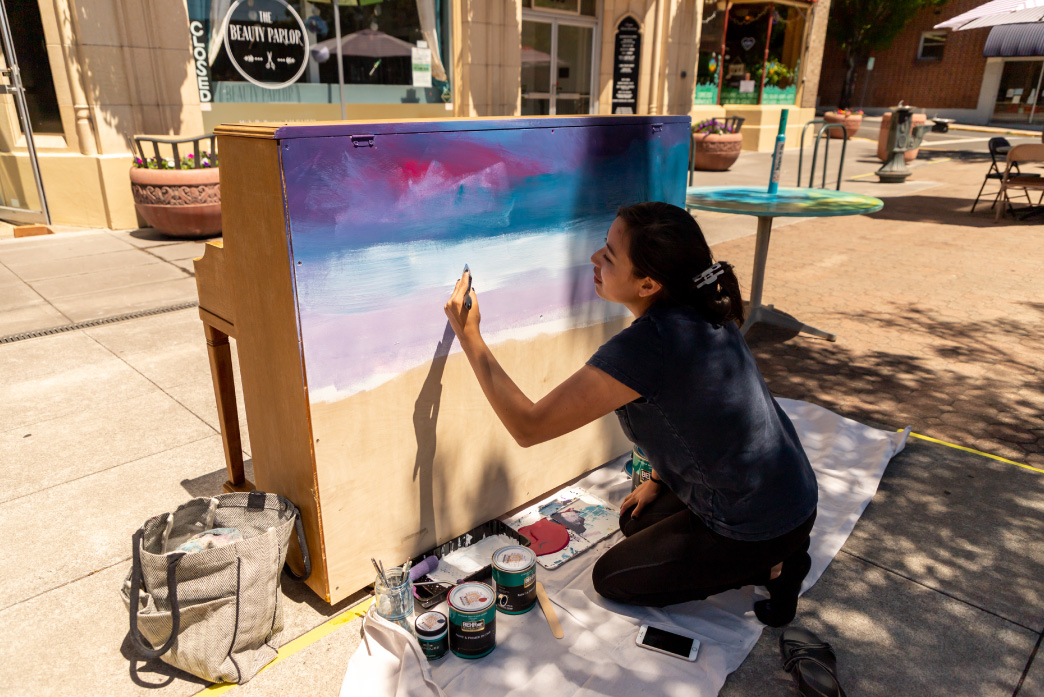
The Klamath Piano Project in downtown Klamath Falls invites musical creativity and is intertwined with beautiful artwork. Discover Klamath
Whether you enjoy a good tune or are a musician yourself, chances are good you’ll tap your toes to the beat when the Klamath Piano Project returns in spring and summer.
Here’s how it works: Each year, between Memorial Day and Labor Day (but sometimes as late as mid-October, weather depending), pianos are decorated by local artists and placed at about six locations around Klamath Falls—typically local plazas, parks, and courtyards. From there, anyone with a song in their heart can sit down and play, giving locals and visitors alike the chance to show off their skills and bring a little joy to the community through song.
Repurposed Utility Boxes Celebrate Native, Migratory Birds
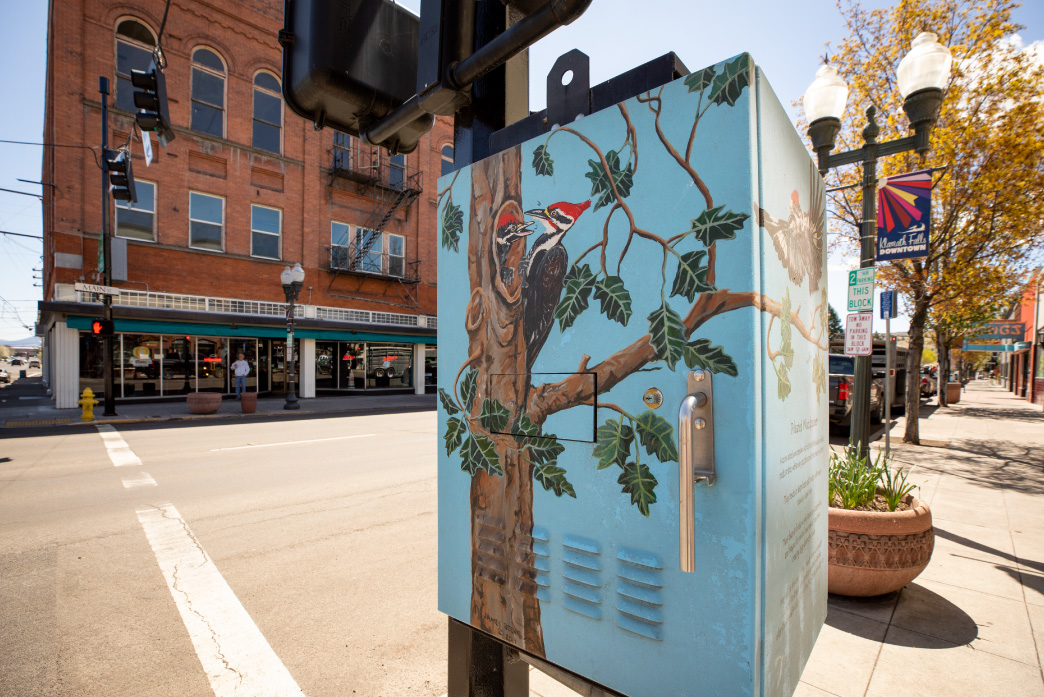
The painted utility boxes add a whimsical charm to downtown Klamath Falls. Discover Klamath
Murals and pianos aren’t the only form of public art you’ll find in downtown Klamath Falls: While walking around, keep an eye out for the city’s Bird Boxes: utility boxes that have been painted to spotlight some of the many birds that live in or migrate through the Klamath Basin each year. Some of those species include the great blue heron, bald eagle, pileated woodpecker, and mallard duck.
The colorful utility boxes pay tribute to the Klamath region’s reputation as one of the best bird-watching spots in the United States—home to six national wildlife refuges and the Winter Wings Festival (the nation’s largest and oldest birding festival) every winter. So if the bird boxes pique your interest and you’d like to learn more, check out our guide to birding in Klamath County.
Mural Mixes Past and Present in Chiloquin
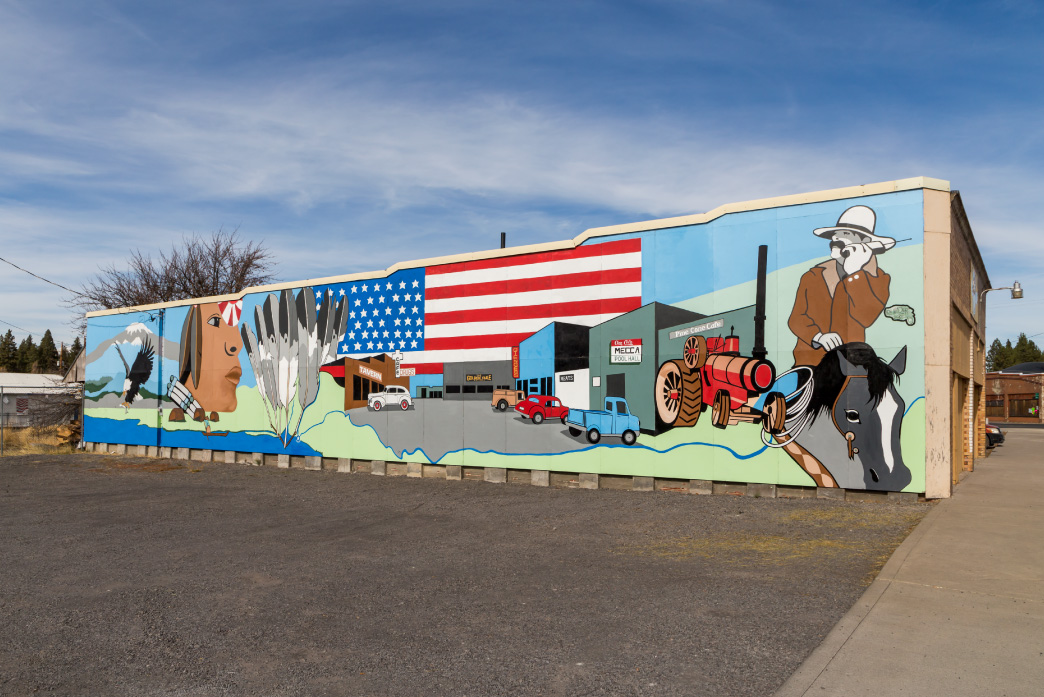
The mural near Two Rivers Art Gallery in Chiloquin brings a burst of color and vibrancy to downtown, captivating passersby. Discover Klamath
Two Rivers Art Gallery celebrates art in all its forms in Chiloquin, and that love for the arts extends to the gallery’s parking lot—where you’ll see “Mazama to the Millennium,” a massive mural painted on a neighboring building.
The 16-foot-high, 100-foot-long mural was designed to showcase Klamath County’s notable history and vibrant present—with nods to the area’s first inhabitants, old-school storefronts, the area’s industrious past (with nods to ranchers and loggers), and more; in a fitting stylistic choice, the most modern of the mural’s subjects is a cowboy talking on a cell phone. The mural was designed and painted by a team of volunteers and artists working with local students.
Military History on Display in Malin
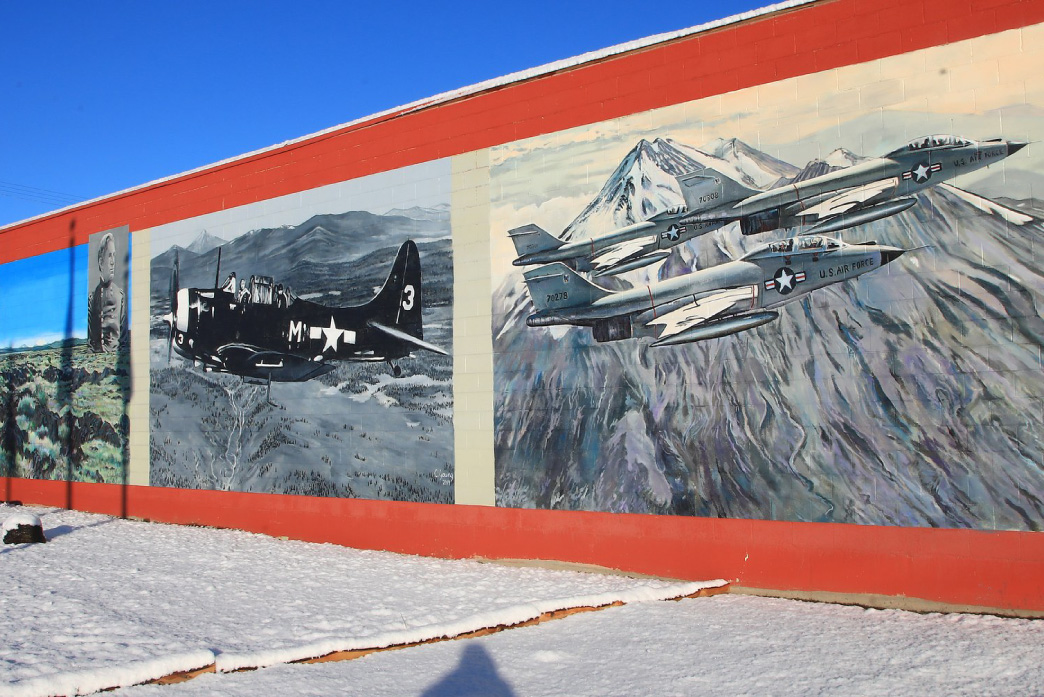
This mural in Malin vividly depicts and honors past wars from the area. Discover Klamath
Klamath County is home to rich military history, and visitors can learn about that past in a variety of creative ways at Veterans Park in the community of Malin—a small town roughly a half-hour southeast of Klamath Falls. There, five murals, each painted by local artist Chris Young, showcase different aspects of the area’s military history; one, in particular, pays tribute to Ehle Hiram Reber—a Malin resident and Air Force pilot who died during World War II.
Other murals can be found around Malin, as well—including one that honors the area’s close connection to farming and another that shows Czech folkloric dancing (a nod to some of the community’s earliest settlers).
Bronze Sculptures Reflect Local Icons
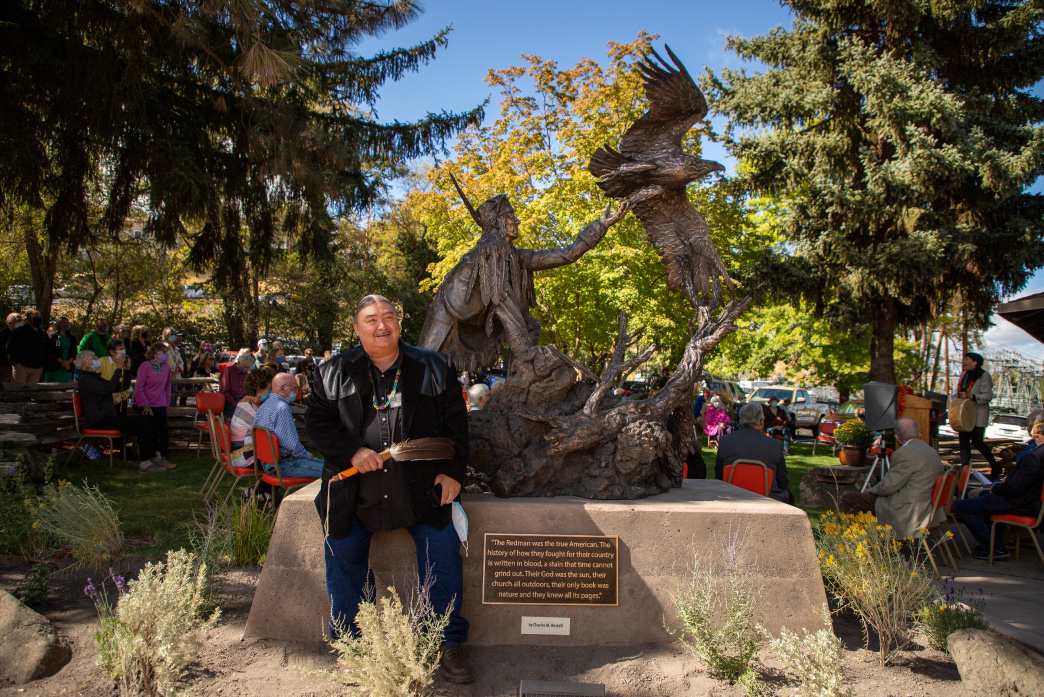
The bronze sculpture of a tribal elder outside the Favell Museum stands as a powerful symbol of Native American heritage. Discover Klamath
Spend enough time in downtown Klamath Falls, and you’ll most likely spy bronze sculptures depicting regional wildlife and the area’s Native American tribes. Many of these gorgeous works were created by Stefan Savides, a local artist who showcases some of what makes Klamath County so magical through detailed, dramatic works of art.
Some of Savides’ works in downtown depict various species of bird (such as great blue herons), while another piece—on display outside the Favell Museum, just across the Link River from downtown—pays tribute to the area’s Klamath, Modoc, and Yahooskin tribes; that eight-foot-tall sculpture shows a tribal elder, adorned in full regalia, taking a feather from a bald eagle. Savides was so committed to honoring and respecting the tribes, he ensured the beadwork on the elder’s moccasins were historically accurate.
Learn more about Savides’ sculptures in Klamath Falls along our self-guided public art walking tour.


